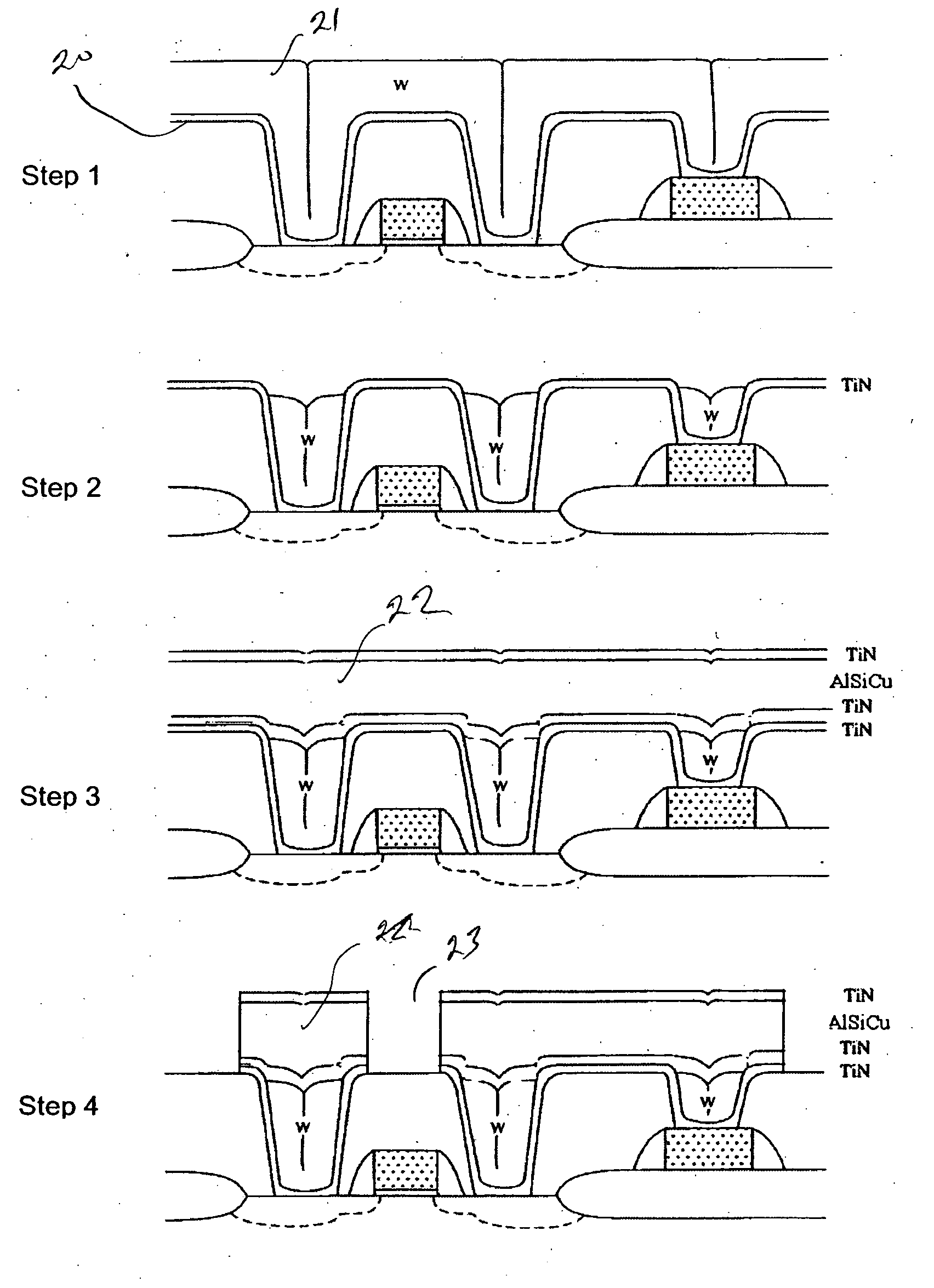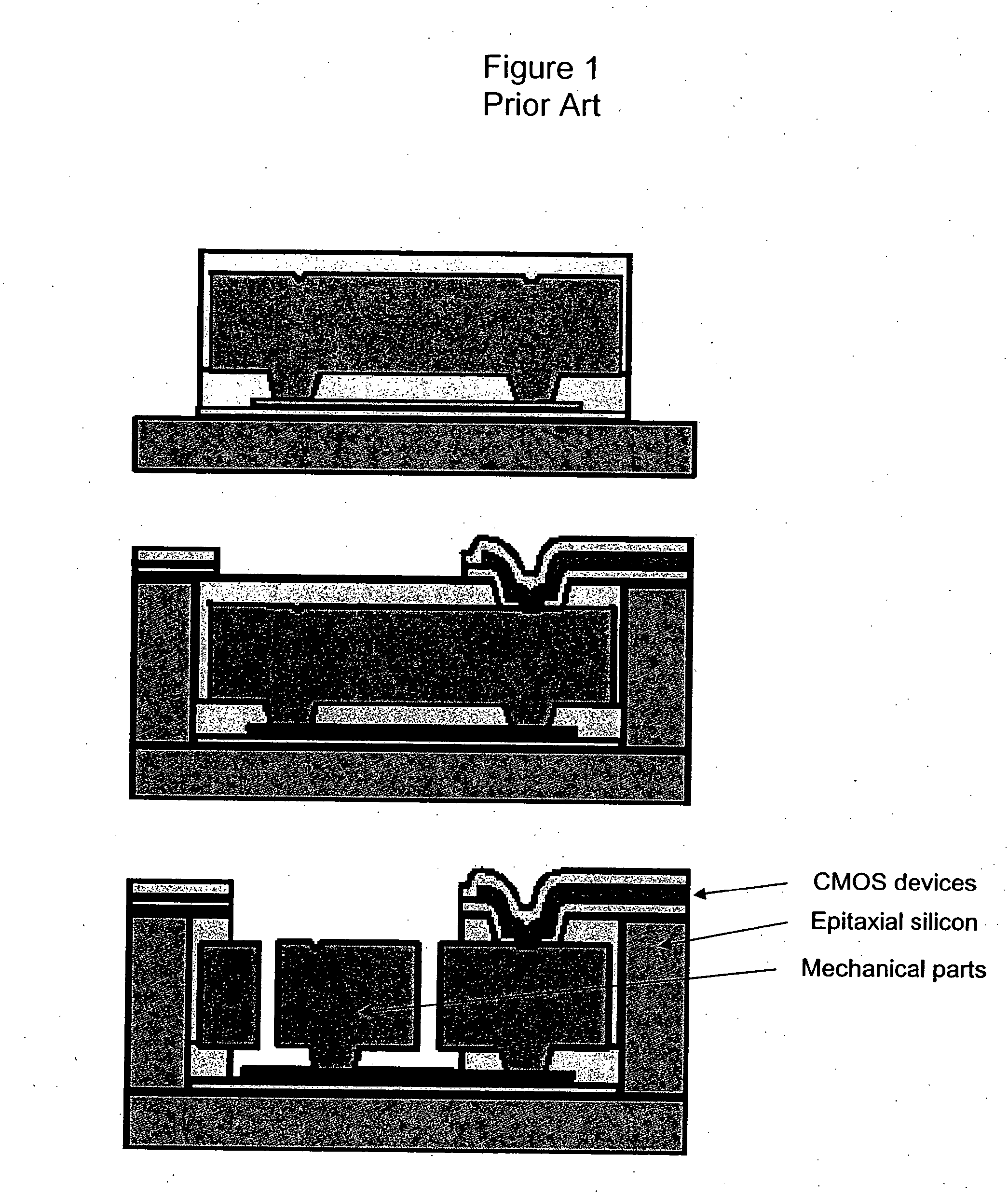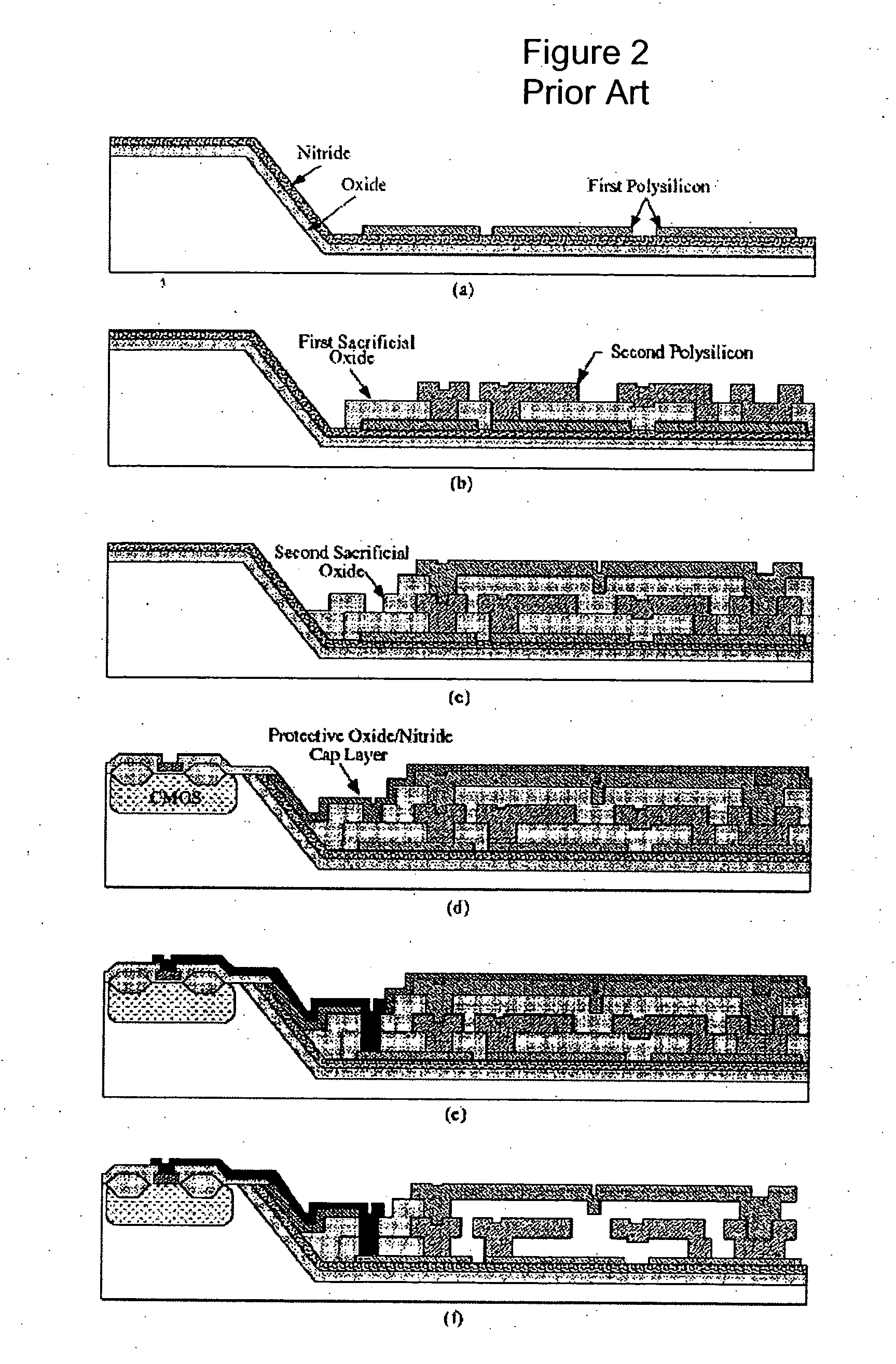Fabrication of advanced silicon-based MEMS devices
a technology of silicon-based mems and fabrication method, which is applied in the direction of television system, instruments, and semiconductor/solid-state device details, can solve the problems of inability to realize the power of mechanical parts, the need to fabricate the integrated circuit after the mechanical parts, and the extra cost of cmp planarization, etc., and achieve the effect of eliminating complex processing
- Summary
- Abstract
- Description
- Claims
- Application Information
AI Technical Summary
Benefits of technology
Problems solved by technology
Method used
Image
Examples
Embodiment Construction
[0153] The process allowing the fabrication of advanced MEMS devices after the integrated circuit is shown in FIG. 11. This process requires the mechanical parts of the MEMS device to be fabricated over the interconnections of the integrated circuit, thus imposing an upper limit on the process temperature of about 550° C., the maximum temperature at which aluminium interconnections can be exposed.
[0154] The MEMS device shown in FIG. 11 has a mechanical MEMS part 10 and an integrated circuit part 11. These are formed on a silicon substrate 12 having a well 13 with tungsten plugs 14 over Ti / TiN at the contacts. A TiN / Al / TiN layer 15 provides the interconnects.
[0155] A first silicon layer 15 interconnects the integrated circuit 11 and MEMS device 10, which is made out of structural silicon layers 17 over a region 18 where sacrificial material has been removed.
[0156] The maximum temperature at which typical Al—Si binary alloy, Al—Cu binary alloy or Al—Si—Cu ternary alloy interconnect...
PUM
 Login to View More
Login to View More Abstract
Description
Claims
Application Information
 Login to View More
Login to View More - R&D
- Intellectual Property
- Life Sciences
- Materials
- Tech Scout
- Unparalleled Data Quality
- Higher Quality Content
- 60% Fewer Hallucinations
Browse by: Latest US Patents, China's latest patents, Technical Efficacy Thesaurus, Application Domain, Technology Topic, Popular Technical Reports.
© 2025 PatSnap. All rights reserved.Legal|Privacy policy|Modern Slavery Act Transparency Statement|Sitemap|About US| Contact US: help@patsnap.com



